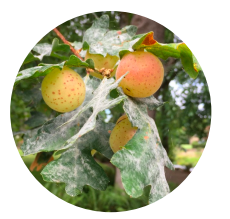If you’ve attended one of our Tree Summits, or nature walks, or are a regular newsletter reader, you may have noticed that OLWC is a pretty big fan of Oregon white oaks.
So what’s the big deal about this tree in particular?
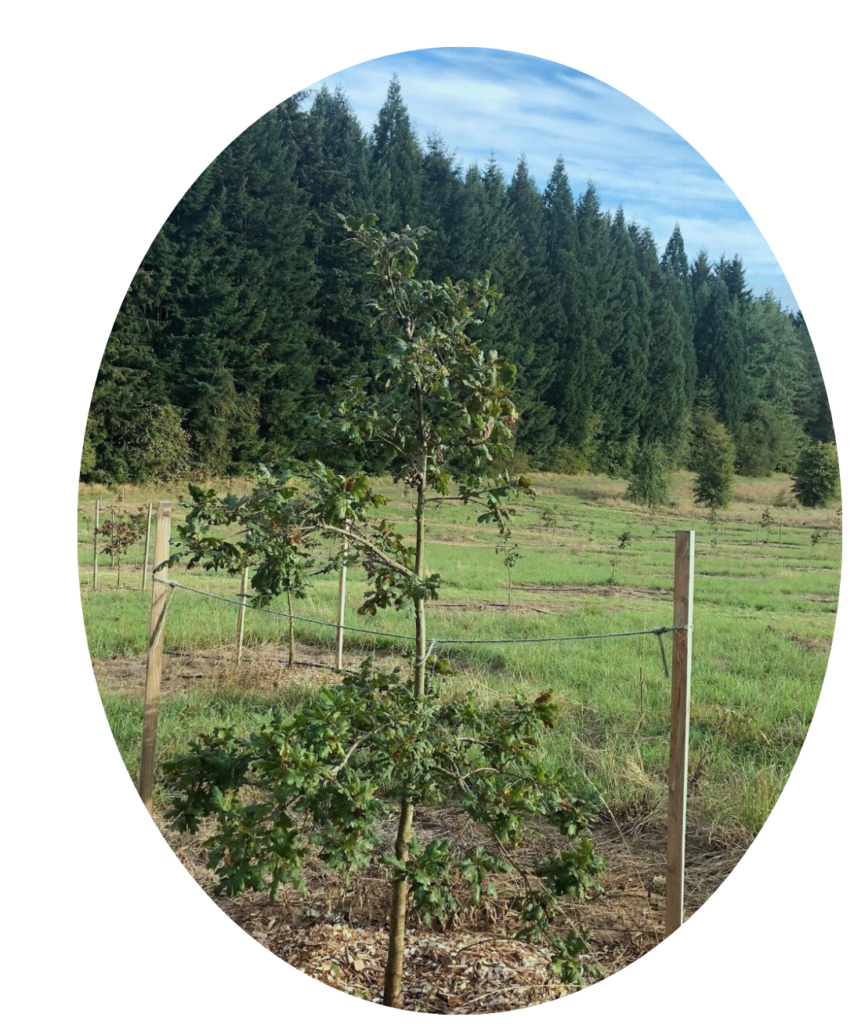
Yonug Oregon white oak at Luscher Farm
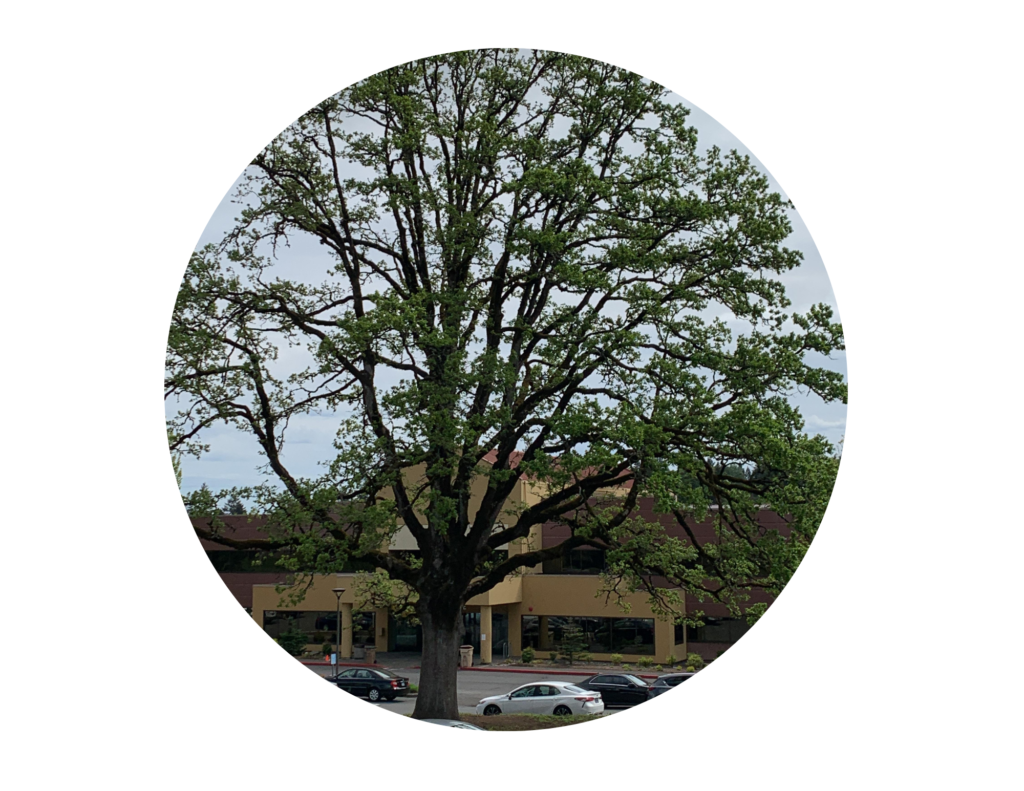
Mature Oregon white oak in Oswego Town Square
Photo by Linda Hartling
There are few images more iconically representative of the Willamette Valley than the silhouette of a mighty Oregon white oak tree growing next to a field.
Prior to European settlement, the Willamette Valley was made up of oak-dominated savanna and woodland habitats as a result of the management by the Native American tribes who made the valley their home. Repeat, controlled burning of the landscape maintained the open habitat for hunting and encouraged the growth of camas and acorns — important food sources. Low-intensity burning also kept other tree species from competing with the more fire-resistant oaks.
Over the last two centuries of European settlement, the shift away from native land management has produced the valley that we know today, where only about 5% of Oregon white oak habitat remains.
There exist small pockets of oak ecosystems today, including the Westlake Oak woodland, here in Lake Oswego, which supports a large diversity of native wildlife.
Where else do you see Oregon white oaks in Oregon? You may even have an Oregon white oak in your backyard! Read below to learn how to identify this iconic tree and how you can support local oak conservation efforts.
How to identify an Oregon white oak
Sometimes the trickiest part to spotting an Oregon white oak is being able to distinguish it from other common urban oaks that have been introduced and since naturalized in Lake Oswego, such. as English oak (Q. robur), pin oak (Q. palustris), and red oak (Q. rubra). Don’t worry, once you begin to study the morphological characteristics of our native oak, you’ll begin to notice some interesting botanical oddities.
Leaves
Unlike the characteristic pointed lobes of red oaks, white oaks have 6-9 round lobes on each leaf. The top of an Oregon white oak leaf has a deep green sheen in the spring and summer with soft hairs on the underside to trap moisture.
Acorns
Oregon white oaks produce acorns that ripen in the summer and fall to the ground early August to November. Their acorns are about 1.2 inches long with shallow caps that resemble a head with a knit cap pulled over the ears. They are the perfect size for picking up and storing in pockets!

Bark
Their bark is typically light gray with thick furrows and ridges that create perfect microhabitats for lichen, licorice fern, and moss!

Shape
Oregon white oaks are a slow-growing species but can reach 70-100ft in height with a rounded crown and intricate, bronchial branching pattern. Over time, tree branches will naturally take corkscrew-like twists as the tree grows, which gives the Oregon white oak that distinct contorted look.
The shape of their crown largely depends on the ecotype in which it’s growing. In open areas, like savannas, their branches will extend out, but in shaded woodlands amongst other trees, oak branches will form a narrower canopy.
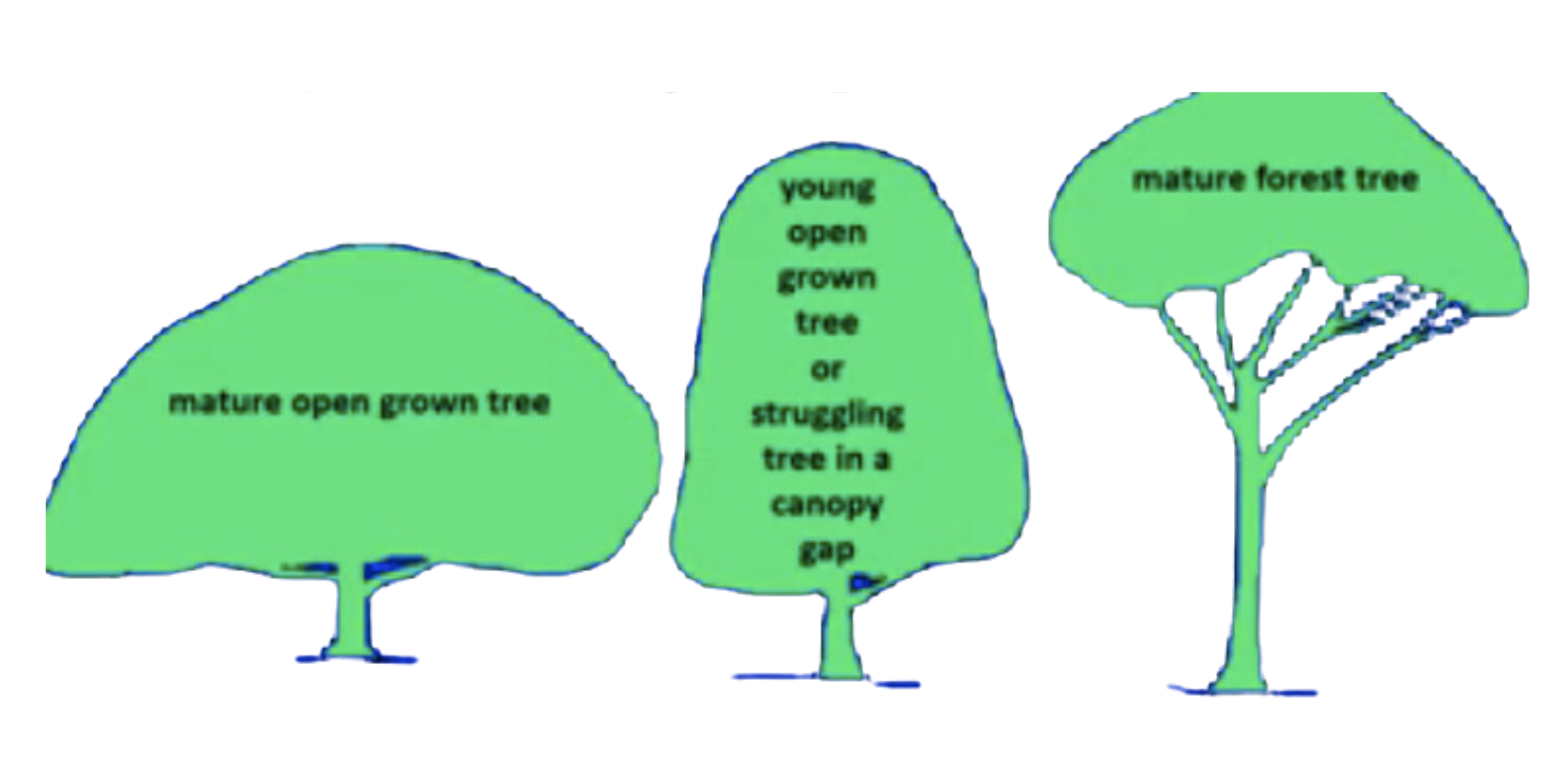
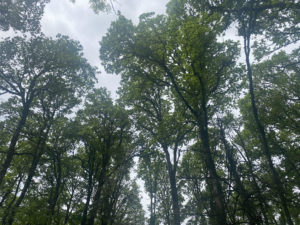
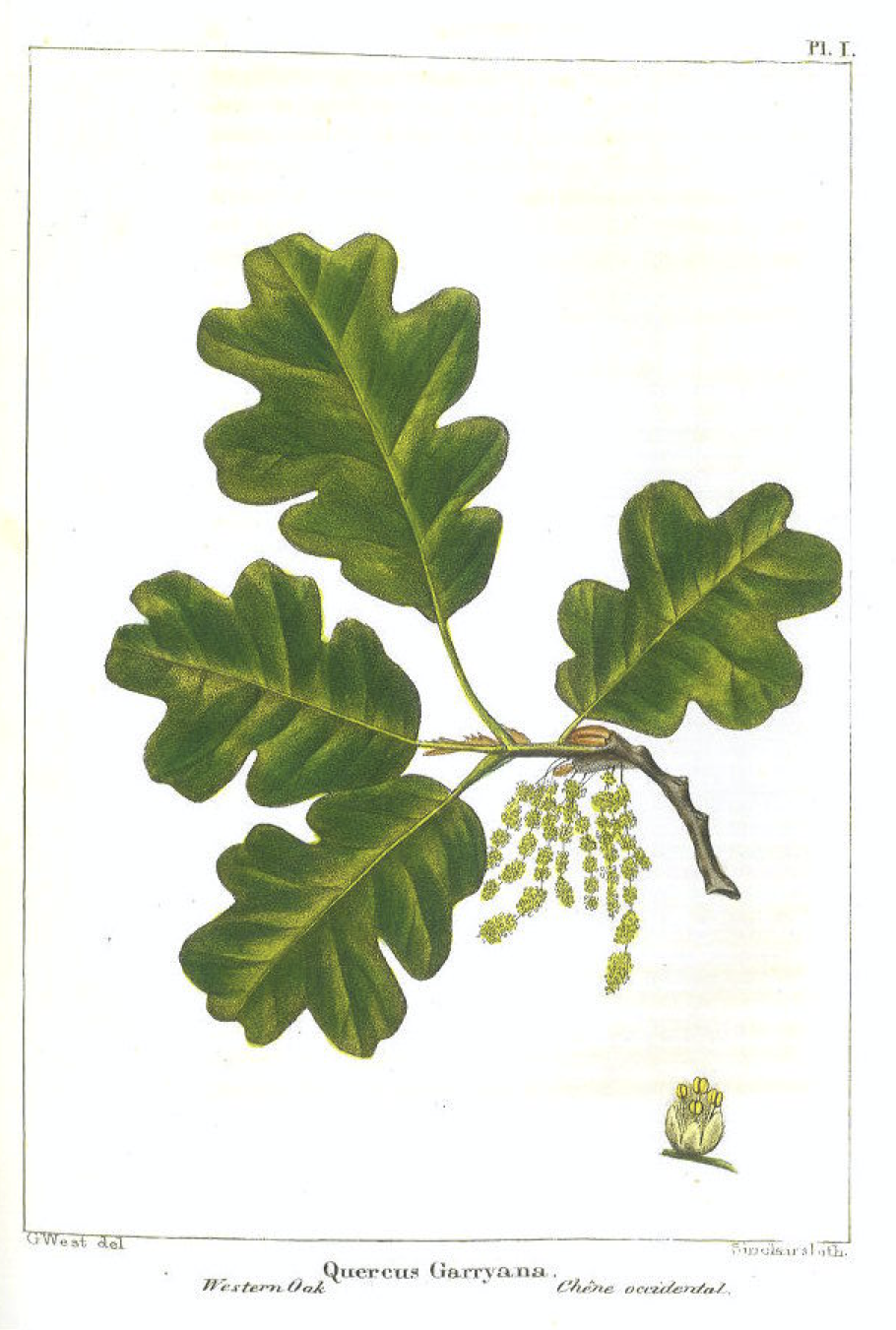
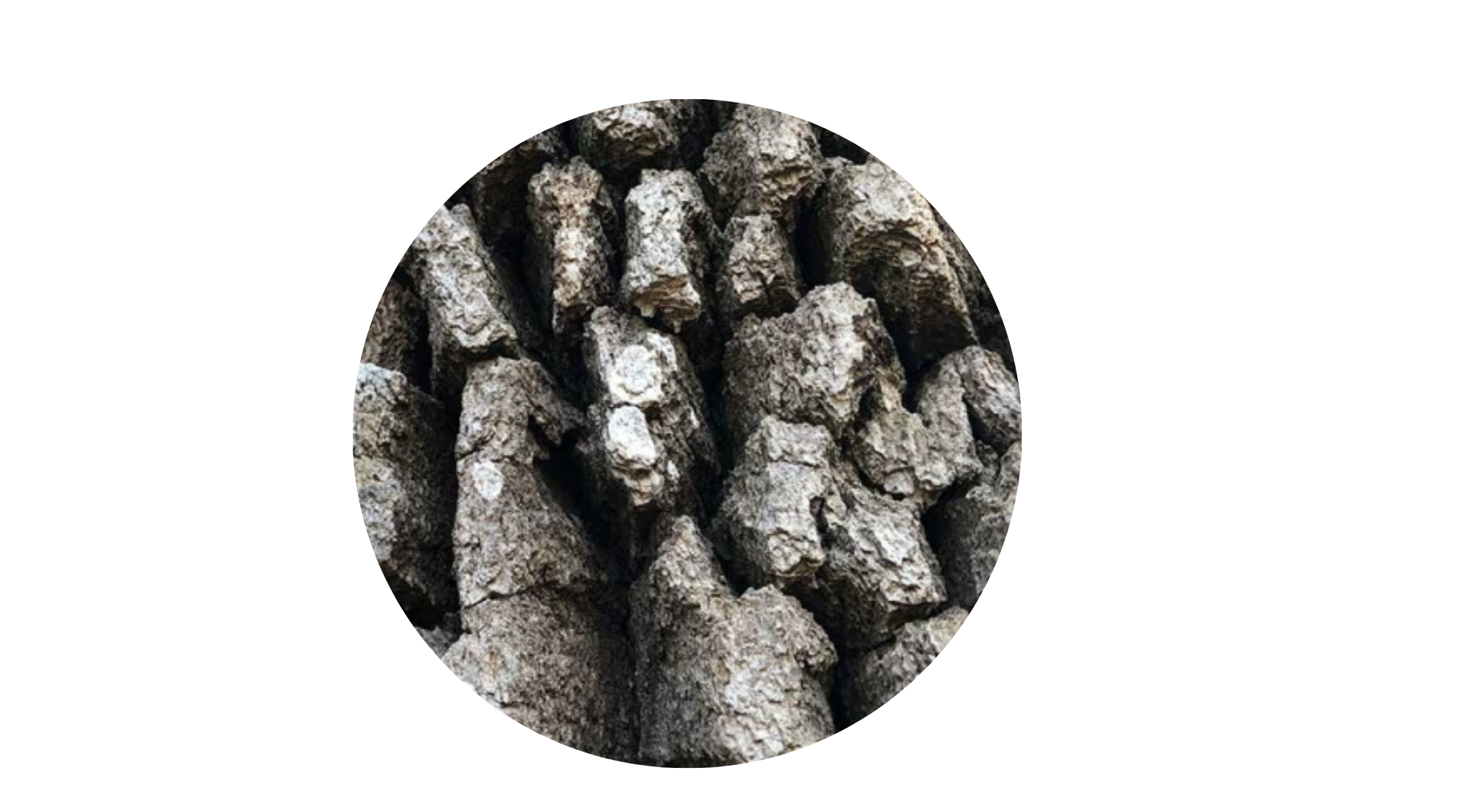
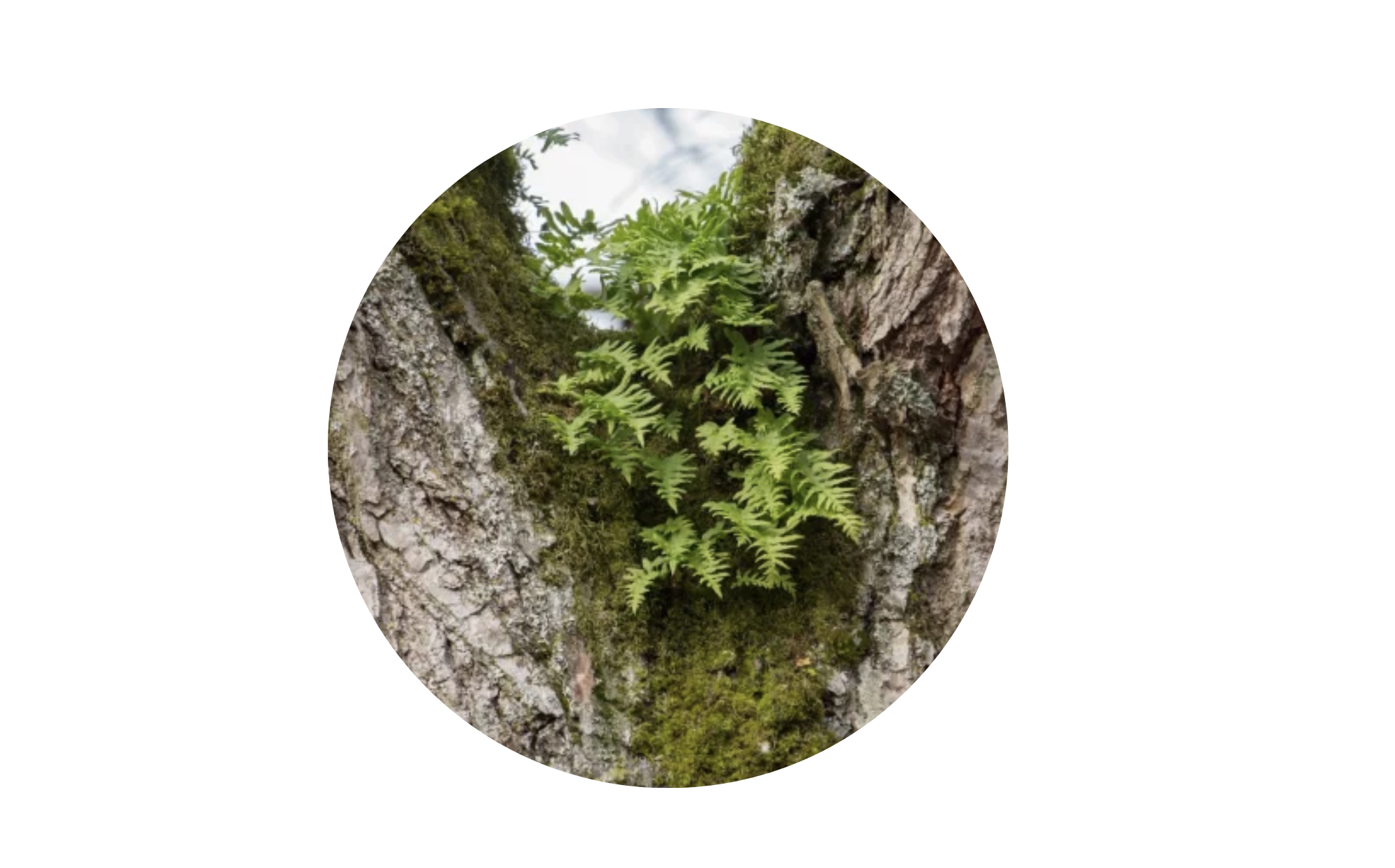
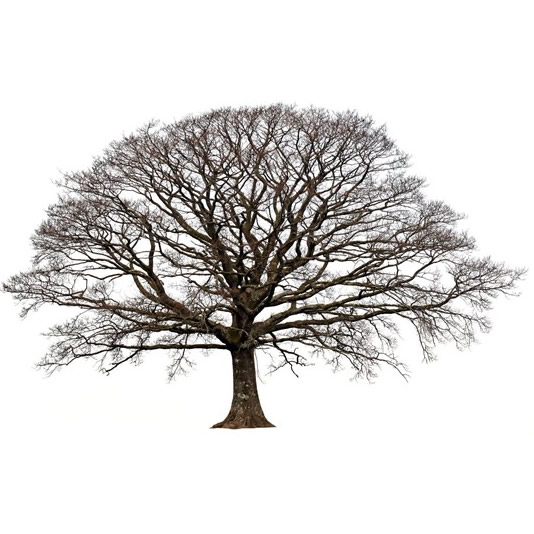
Bonus: Oak Galls
If you spot a spherical growth on the foliage of an oak, you’re looking at an oak gall, cased by tiny wasp members of the Cynipidae family. These wasps will lay eggs in leaves, branches, acorns, flowers, and roots of oaks causing tissues to swell, forming galls. Galls are a common sight in Oregon white oak in particular, but damage is mostly cosmetic.
